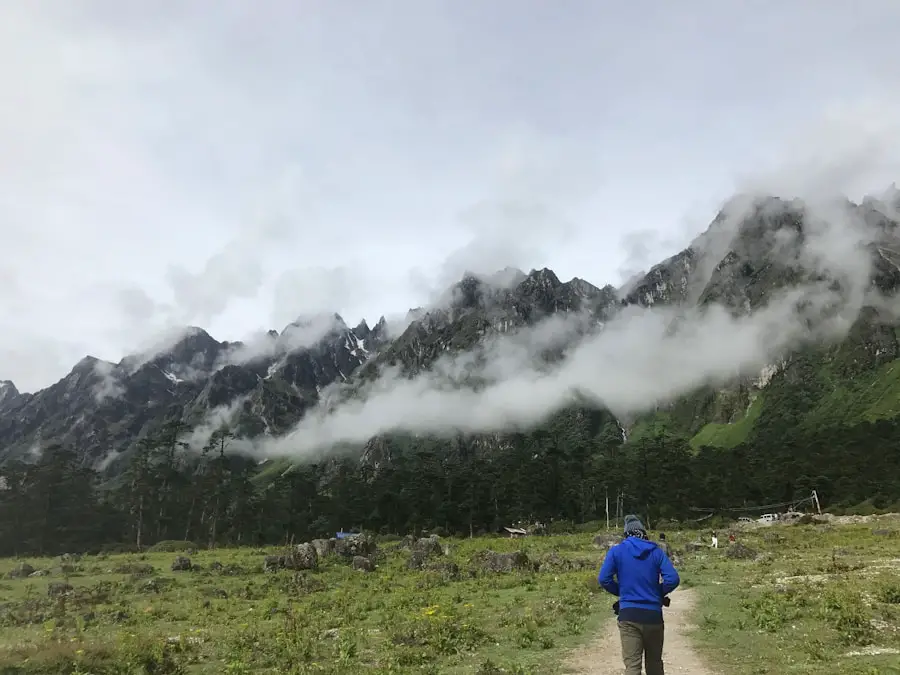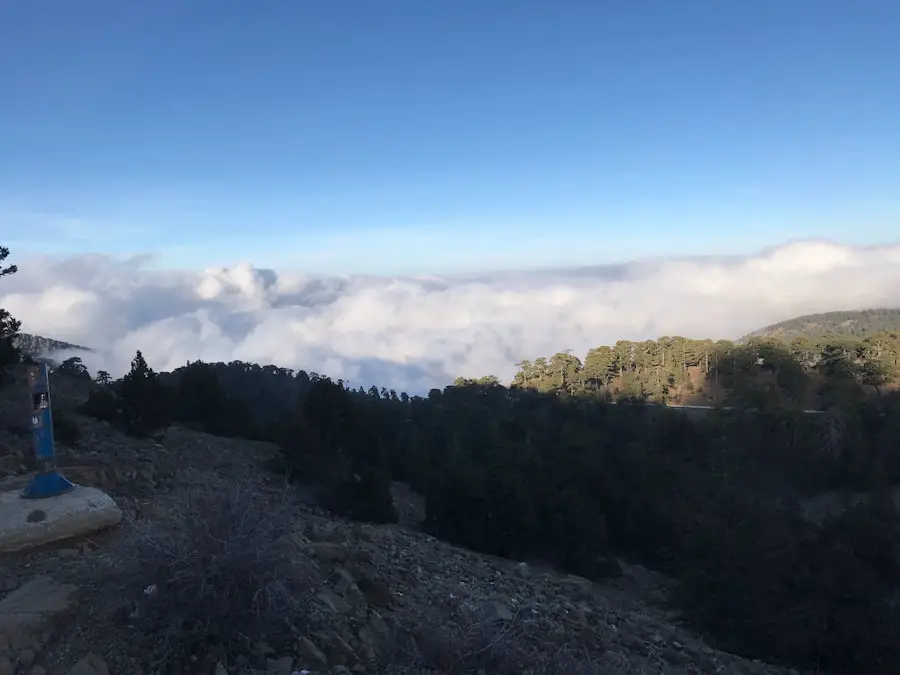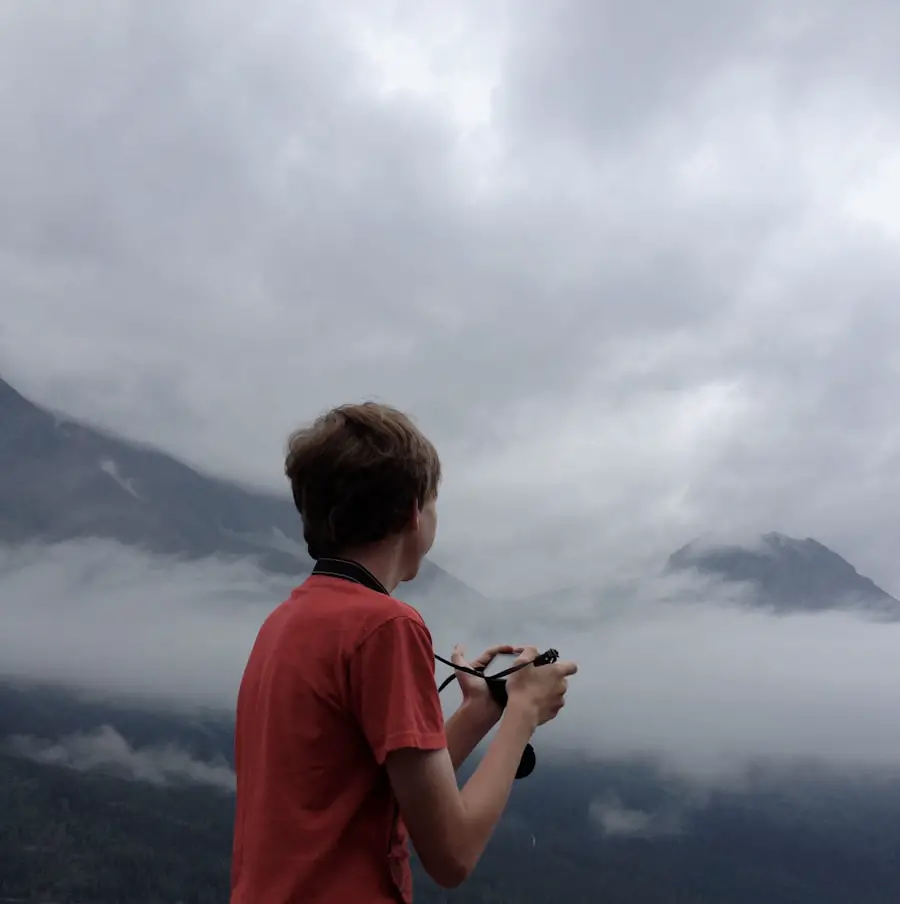Moody landscapes possess a unique charm that captivates the senses and stirs the soul. These environments, often characterized by dramatic skies, shifting light, and rich textures, evoke a sense of mystery and wonder. When clouds gather and the sun dips below the horizon, the world transforms into a canvas painted with deep blues, grays, and purples.
The interplay of light and shadow creates an ethereal atmosphere that can be both haunting and beautiful. For instance, the rugged cliffs of the Pacific Northwest, shrouded in mist, offer a striking contrast to the vibrant greens of the surrounding forests. This juxtaposition not only enhances the visual appeal but also invites introspection and contemplation.
Moreover, moody landscapes often serve as a backdrop for powerful natural phenomena. Storms rolling in over the mountains can create breathtaking vistas, where lightning illuminates the sky and thunder reverberates through the valleys. Such moments remind us of nature’s raw power and unpredictability.
The changing weather conditions can also lead to stunning visual effects, such as rainbows emerging after a storm or the soft glow of twilight casting a magical hue over the terrain. These experiences are not merely aesthetic; they resonate deeply within us, fostering a connection to the natural world that is both profound and transformative.
Key Takeaways
- Moody landscapes offer a unique and dramatic beauty for hikers to enjoy
- Cooler temperatures and reduced sun exposure make for a more comfortable hiking experience
- Enhanced wildlife sightings provide an opportunity for nature enthusiasts to observe and appreciate the local fauna
- Empty trails offer a sense of tranquility and solitude for hikers seeking a peaceful outdoor experience
- Improved visibility and photo opportunities allow for stunning and unique photography in the moody landscape
Cooler Temperatures and Reduced Sun Exposure
As seasons shift, cooler temperatures become a hallmark of outdoor adventures, particularly in autumn and early spring. The respite from the sweltering heat of summer makes hiking and exploring more enjoyable. With temperatures dropping, the air feels crisp and invigorating, allowing for longer excursions without the fatigue that often accompanies high heat.
This cooler climate not only enhances physical comfort but also encourages individuals to engage more fully with their surroundings. The refreshing chill can invigorate the senses, making every breath feel revitalizing and every step more purposeful. Additionally, reduced sun exposure during these cooler months is a significant advantage for outdoor enthusiasts.
The harsh rays of summer can lead to sunburns and heat-related illnesses, but in cooler weather, hikers can enjoy their activities without the constant worry of overexposure. This allows for longer periods spent outdoors without the need for excessive sunscreen or protective clothing. The gentle sunlight filtering through the trees creates a dappled effect on the forest floor, enhancing the beauty of nature while minimizing the risks associated with intense UV radiation.
This balance between comfort and safety makes cooler hiking seasons particularly appealing.
Enhanced Wildlife Sightings

The transition into cooler months often brings about a noticeable change in wildlife behavior, leading to enhanced opportunities for sightings. Many animals become more active as they prepare for winter, making them easier to spot during hikes. For instance, deer may be seen foraging for food in open fields or along trails, while migratory birds begin their journeys southward, filling the skies with their graceful formations.
Observing these creatures in their natural habitats can be a thrilling experience, offering insights into their behaviors and interactions within the ecosystem. Moreover, the changing foliage during these seasons can create ideal conditions for wildlife observation. As leaves turn vibrant shades of red, orange, and yellow, they provide a stunning backdrop against which animals can be seen more clearly.
The thinning of vegetation as winter approaches also means that animals are less concealed by dense underbrush. This increased visibility allows hikers to witness moments that might otherwise go unnoticed—such as a fox stealthily stalking its prey or a family of raccoons rummaging through fallen leaves. These encounters foster a deeper appreciation for biodiversity and highlight the intricate relationships that exist within ecosystems.
The Tranquility of Empty Trails
| Trail Name | Location | Length (miles) | Elevation Gain (feet) |
|---|---|---|---|
| The Tranquility of Empty Trails | Rocky Mountain National Park, Colorado | 5.4 | 1,033 |
One of the most appealing aspects of hiking during cooler months is the tranquility found on empty trails. As temperatures drop and daylight hours shorten, many casual hikers retreat indoors, leaving nature’s pathways less crowded. This solitude offers a unique opportunity to connect with nature on a deeper level.
The absence of bustling crowds allows for a more immersive experience; one can hear the rustle of leaves, the distant call of birds, and even the soft crunch of footsteps on gravel trails without interruption.
Walking alone or with a small group through serene landscapes can be meditative. The stillness encourages reflection and mindfulness, allowing hikers to fully absorb their surroundings.In these moments of quietude, one might find clarity in thoughts or simply enjoy the beauty of nature without distraction. The experience becomes not just about reaching a destination but about savoring each step along the way. Whether it’s pausing to admire a breathtaking view or listening to the gentle flow of a nearby stream, these moments of solitude can be profoundly enriching.
Improved Visibility and Photo Opportunities
The unique lighting conditions present during cooler months often result in improved visibility for hikers and photographers alike. Overcast skies can diffuse sunlight, creating soft lighting that enhances colors and reduces harsh shadows. This is particularly beneficial for capturing stunning photographs of landscapes, wildlife, and intimate details within nature.
The muted tones of autumn foliage or frost-kissed branches can be beautifully highlighted in this gentle light, allowing photographers to create images that evoke emotion and tell stories. Additionally, cooler temperatures often coincide with clearer air quality, especially after rain showers or storms have passed through an area. This clarity allows for expansive views that stretch across valleys and mountains without distortion from heat haze.
Photographers can take advantage of this improved visibility to capture sweeping panoramas or intricate close-ups with remarkable detail. The combination of favorable lighting conditions and crisp air creates an ideal environment for both amateur and professional photographers to hone their craft while exploring nature’s beauty.
Reduced Risk of Dehydration and Heat Exhaustion

Hiking during cooler months significantly reduces the risk of dehydration and heat exhaustion—two common concerns during summer excursions. In warmer weather, hikers must constantly monitor their hydration levels to avoid fatigue and overheating. However, as temperatures drop, this concern diminishes considerably.
Cooler air helps regulate body temperature more effectively, allowing individuals to focus on enjoying their hike rather than worrying about excessive sweating or heat-related illnesses. Moreover, cooler weather encourages hikers to drink water more regularly without feeling overwhelmed by thirst due to heat. This balance is crucial for maintaining energy levels throughout longer hikes or strenuous activities.
With less emphasis on hydration management, hikers can immerse themselves in their surroundings and engage more fully with their experience. The ability to enjoy nature without the constant reminder of heat-related risks enhances overall satisfaction during outdoor adventures.
A More Comfortable Hiking Experience
Comfort is paramount when it comes to enjoying outdoor activities like hiking, and cooler temperatures contribute significantly to this aspect. The oppressive heat of summer can lead to discomfort from sweat-soaked clothing and sunburns; however, cooler weather allows for more comfortable attire choices without compromising mobility or warmth. Layering becomes an effective strategy for managing body temperature while providing flexibility as conditions change throughout the day.
Additionally, cooler weather often means fewer insects—such as mosquitoes and ticks—that thrive in warmer climates. This reduction in pests allows hikers to focus on their surroundings without constant swatting or worrying about bites. The overall comfort experienced during hikes in cooler months enhances enjoyment and encourages individuals to explore new trails or revisit favorite spots without hesitation.
The Opportunity for Reflection and Solitude
The quieter trails and serene landscapes found during cooler months create an ideal environment for reflection and solitude. As nature transitions into its winter phase, many individuals find themselves drawn to these peaceful settings for introspection. The stillness allows for deep contemplation—whether it’s reflecting on personal goals, processing emotions, or simply appreciating life’s beauty.
In these moments of solitude, one can connect with nature on a profound level. The rustling leaves or distant sounds of wildlife become companions in thought rather than distractions from it. This connection fosters a sense of peace that is often hard to find in our fast-paced lives filled with noise and distractions.
Embracing solitude in nature not only nurtures mental well-being but also cultivates gratitude for the simple joys found in everyday life. In conclusion, exploring moody landscapes during cooler months offers numerous benefits that enhance outdoor experiences significantly. From breathtaking scenery to improved comfort levels, each aspect contributes to a richer connection with nature that resonates deeply within us all.
If you are considering hiking in areas with clouds, it is important to be aware of the weather conditions and how they can impact your experience. A related article on the best time to travel to Spain can provide valuable insights on how to plan your hiking trip accordingly. Understanding the seasonal changes and weather patterns in your destination can help you make the most of your outdoor adventure.
FAQs
What are clouds and how do they form?
Clouds are made up of tiny water droplets or ice crystals that have condensed from water vapor in the air. They form when warm, moist air rises and cools, causing the water vapor to condense into visible clouds.
How do clouds affect hiking?
Clouds can have both positive and negative effects on hiking. On the positive side, clouds can provide shade and cooler temperatures, making hiking more comfortable. They can also create stunning and dramatic scenery. However, clouds can also bring rain, fog, and reduced visibility, which can make hiking more challenging and potentially dangerous.
Are clouds good for hiking?
Clouds can be good for hiking in certain ways, such as providing shade and cooler temperatures. They can also enhance the beauty of the natural surroundings. However, hikers should be cautious of potential hazards associated with clouds, such as rain, fog, and reduced visibility.
What are some safety tips for hiking in cloudy conditions?
When hiking in cloudy conditions, it’s important to be prepared for changing weather. Some safety tips include bringing appropriate rain gear, wearing layers to stay warm, carrying a map and compass for navigation in case of reduced visibility, and being aware of the potential for slippery or muddy trails.
How can hikers use clouds to their advantage?
Hikers can use clouds to their advantage by seeking shade and cooler temperatures on hot days. Clouds can also create unique and beautiful photo opportunities, adding to the overall hiking experience. Additionally, clouds can provide a sense of tranquility and peacefulness in the natural environment.
